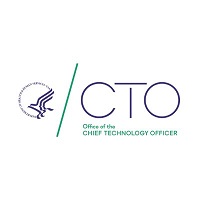 By Maia Laing, Senior Business Consultant, HHS
By Maia Laing, Senior Business Consultant, HHS
Twitter:@HHSIDEALab
Healthcare in America is a pairing of extremes. When ranked, the United States has some of the very best and the very worst healthcare metrics. Americans are able to spend twofold more per capita on healthcare than the OECD average, yet still end up with one-in-four patients who underuse certain lifesaving medications because of costs. American Indian/Alaska Native (AI/AN) people have the lowest life expectancy of all US races and one of the highest disease burdens.
How can America develop an exemplary health system to help achieve health equity for all races, including American Indian/Alaska Native?
What do patients, providers, and the public need to focus on to strengthen care in America?
Fragmentation: Patients & Caregivers
American Indian/Alaska Native populations in particular have high chronic disease burdens. Patients with chronic conditions experience the effects of fragmented care most acutely. They endure the worry of not knowing the next step in their care due to breakdown in communication between care providers. The lack of continuity of care results in lost paperwork, redundant testing, and poor outcomes.
When patients and their caregivers try to become more involved, they often experience difficulty obtaining medical records. This barrier exists despite a decade of evidence through the OpenNotes trials that demonstrate the powerful benefits of permitting patients full access to their records. Access to personal health records for American Indian/Alaska Native people is further complicated by the ‘digital divide’ and decreased internet availability in American Indian/Alaska Native communities.
Fragmentation: Providers
Many American Indian/Alaska Native people require care that is not available on their reservations and/or within the Indian Healthcare System. As a result, they are referred for consultations and more complex care to healthcare teams spread across an increasing number of facilities and providers. These appropriate referrals highlight a pressing and ubiquitous need for tools that improve communication, data exchange, and task distribution across an evolving healthcare ecosystem.
Clinicians experience the effects of data fragmentation twice. First, inadequate advancements in data interoperability and exchange leave data stranded as patients move between care settings. Second, many electronic health record systems, including Resource and Patient Management System (RPMS – the Indian Health System health information technology solution) further fragment information across multiple tabs and windows through poor user interface designs. This leads to clinicians having a partial picture of the patient’s medical story.
Indian Health Services & the Opportunity of Innovation
Health and healthcare follow individuals throughout their entire life; medical records should too. The IHS can insist upon a care-first and patient-first medical record design. It can promote electronic health record technology and standards that prioritize data portability, access, population health and equity.
The Indian Health Service Modernization Project provides an opportunity to lead healthcare innovation in America. It presents an opportunity to highlight the benefits to patients, providers, and the public of human-centered health information systems and their ability to help build an integrated care system.
Healthcare solutions must start with the patient and the community.
Read more here.
This article was originally published on the Office of the Chief Technology Officer blog and is republished here with permission.
